TravelDeparture Gate: Thurso
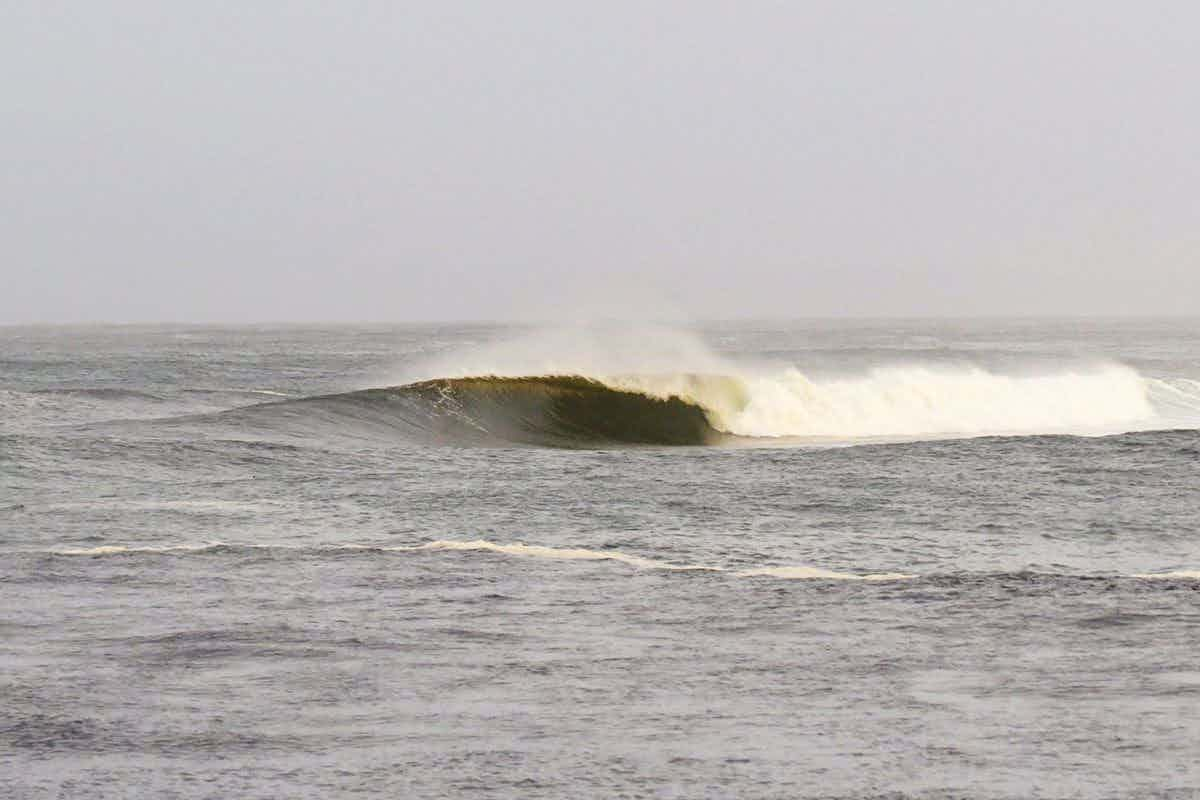
In midsummer it’s nearly possible to surf around the clock on Scotland’s north shore; the sun only really dips below the horizon for a few hours after the local pubs have kicked out. Swell may well be less consistent during the northern hemisphere summer, but temperatures this far north (on a latitude similar to Anchorage, Alaska) are more tolerable for the vast majority of surfers than they are in the depths of winter when lumps of ice float out of the rivers and through the line-ups. With Scotland voting to remain in the E.U. in the recent Brexit referendum there have been renewed calls for Scottish Independence, which could see English surfers having to pack their passports in order to enjoy some of the best waves that their island has to offer.
The north coast of Scotland is divided into two counties, Sutherland in the west and Caithness in the east. Together, they have a coastline totalling 114 miles (182.5km). The vast majority of North Atlantic weather systems swing around under Greenland and are bounced back up again by the North Atlantic Jet Stream, sending them off between Iceland and the north of Scotland. They then head into the Norwegian Sea, sending swell down onto Scotland’s north coast. The geology along this coastline ranges from the long beaches and rivermouths of the west, an ancient glacial landscape, to the relatively flat flagstone reefs of Caithness. It is these reefs that tempt so many surfers to travel to this distant coast, often patiently waiting out periods of bad weather in order to enjoy a tidal window of a few hours surfing some of the best slabs in Europe.
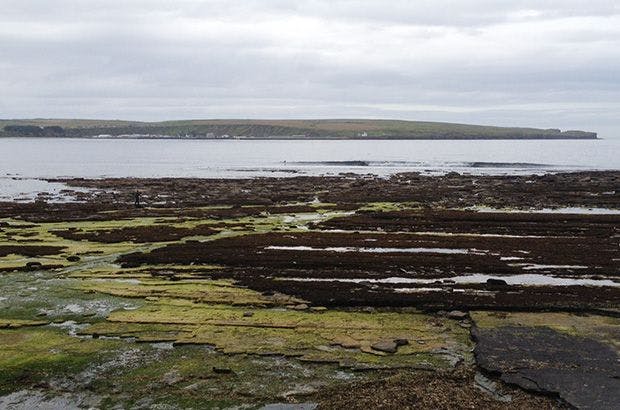
In the top right-hand corner of Scotland sits the town of Thurso, and the wave that breaks inside the bay here is often referred to as a “coldwater Nias”. It’s the big-name surf break around those parts and the nearby town is the base for most visiting surfers, as other spots are near by. Thurso is the northernmost town on the British mainland; if you plan on flying into a London airport and then driving there in your hire car then you’re setting yourself up for twelve hours behind the steering wheel, at least. Even an international flight into Edinburgh airport puts you over five hours away from the waves, so either be prepared to put some miles under your wheels or take a connecting flight to a regional airport such as Inverness. Once you’re there though, there are a handful of good waves within a stone’s throw of the town.
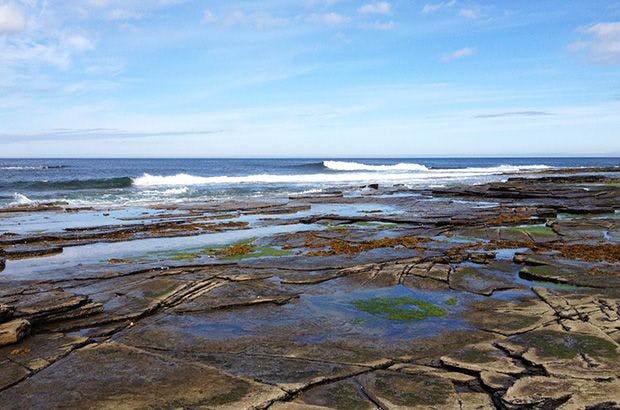
Brimms Ness
Three miles east of Thurso is the point of Brimms Ness. Here heavy, hollow, fast waves break across shallow rock shelves separated into three distinct breaks; the Bowl, the Cove, and the Point. Brimms is exposed and picks up almost any northerly swell so will have waves when other spots are flat, but this exposure also means that the effects of the tidal flow are strong here: expect strong currents and a lot of water moving about. The Bowl is the prime spot of the three, a right-hander that appears out of deep water to break forcefully over a slab, with an even heavier and hollower inside section. It’s best on a mid to high tide and holds large, powerful swells if you’re up to the task.
The Cove is a little further down the point and is a similar set-up, a slab that runs into deep water, whilst the Point is a left that can offer much longer rides and on lower tides than its neighbours, but which breaks less frequently and is easily wind-affected. Parking for the waves at Brimms Ness is on private farmland, so drive and park respectfully.
Thurso Bay
In Thurso Bay itself, the westernmost break, alongside the breakwater, has the unappealing name “Shit Pipe”. Apparently it earned this name due to the brown colour of the peat stained water that flows down the river from inland, and the wave itself offers fun lefts and rights over a reef that faces north, out of the bay. You can paddle out off the beach, or jump off the breakwater if the tide is high enough.
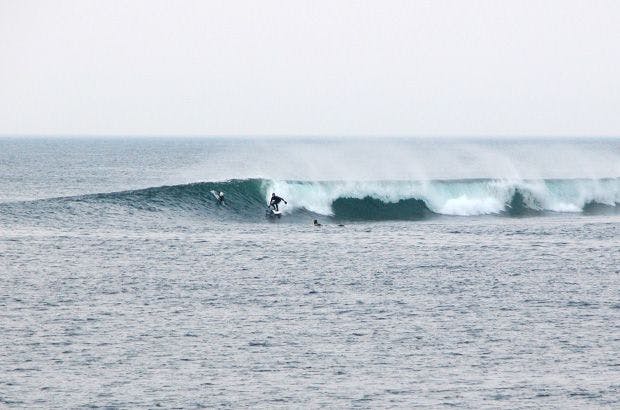
Thurso East
On the other side of the river, though, is the main event. Thurso East is a freight train right that rolls across a flat and seaweed-covered reef and which offers a world-class barrel when the stars align. The swell has to have come from the northern quadrant in order to turn Thurso East on, whilst swells with more west in them tend to be hollower as they are normally more powerful groundswells that have wrapped around Holborn Head into the bay. The take-off is a fairly user-friendly drop that develops into a long barrel section with a tapering wall that speeds up but diminishes in size as it reaches the inside section. Thurso East breaks throughout the tidal range, but is best on an incoming tide to mid, whilst the prevailing south-westerly wind can push some bumps across the face of the wave if it gets too strong. Your access options are to either park in the farmyard in front of the break and walk out across the reef, or hop off the breakwater in town and let the cold flow from the river give you an easier ride out into the line-up.
As you continue East, there are various reefs that offer opportunities for the confident and adventurous, however they are hard to find, hard to get to, and hard to surf. The stretch of beachbreak at Dunnet Bay offers peaks along its length and picks up a fair bit of swell due to its northwest exposure. There’s also a right-hand reef at the north end of the beach that is worth checking out. Past Dunnet Head you are back on a stretch of largely north facing coastline with the familiar geology of flat, smooth reefs extending out into the North Atlantic. At Ham there is a left that runs into deep water, and eastwards from here there are numerous mysto reefs, some surfable, others not so much, that are ripe for exploration but that tempt few due to the quality of surf and relative lack of crowds at the known spots.
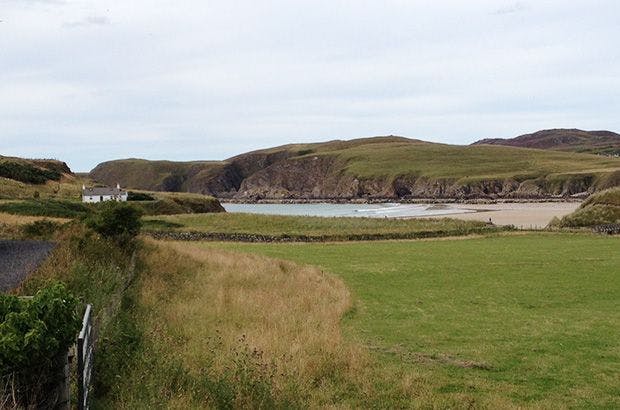
A single photograph of Thurso East is enough to cause many British surfers to drive the length of the British Isles when the weather charts look promising, and the wave has hosted numerous national and international contests, including a WQS 5* in 2006. Sure, Scotland doesn’t have a reputation for uninterrupted sunshine but windows of clear weather there are beautiful, and the scenery in the north of Scotland (and for much of the journey there) is hard to beat. Besides surfing, the north of Scotland has incredible wilderness areas to hike, and then of course there are the whiskey distilleries to tour. Besides the possibility of inclement weather and the lower temperatures, it is also worth noting that, just ten miles west of Thurso, the beach at Sandside has in the past had radioactive particles detected amongst the grains of sand. These tiny particles have washed ashore having leaked into the sea during the decommissioning of the nearby Dounreay nuclear power site in the 1960s and 70s. That may fade to the back of your mind though, if you pull up at Thurso East or in front of Brimms on a good day, with a clear skies, light winds, and a solid swell meeting it’s hollow end on the flat reefs of Caithness.
WHERE: Fly to Inverness Airport (INV) via a London airport, or Edinburgh (EDI)
WHEN: May – July for the longest hours of daylight.
WHY: “Coldwater Nias” at Thurso East and numerous heavy water slabs and reefs.
HOW: Standard Shortboard and a step-up, perhaps with a bit more volume. Take a spare, as the waves are heavy and the reefs often shallow.